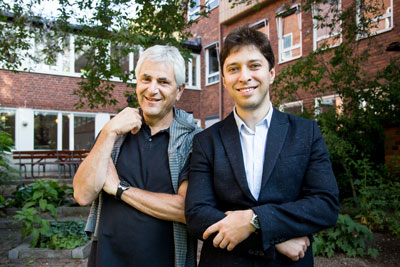| Jul 28, 2014 |
Stem cells from nerves form teeth
|
|
(Nanowerk News) Researchers at Karolinska Institutet in Sweden have discovered that stem cells inside the soft tissues of the tooth come from an unexpected source, namely nerves. These findings are now being published in the journal Nature ("Glial origin of mesenchymal stem cells in a tooth model system") and contribute to brand new knowledge of how teeth are formed, how they grow and how they are able to self-repair.
|
|
Our health and quality of life is closely linked to our dental health. With age, our teeth become more susceptible to infection, wear and damage, and it is important for the health services to help people maintain good dental health. It was previously known that the living, soft part of the tooth, or the pulp, in addition to connective tissues, blood vessels and nerves also contains a small reserve of stem cells. These stem cells are capable of repairing the tooth when it has been damaged by assisting the reformation of both hard and soft tooth tissue. Researchers have long been discussing the origin of these stem cells. By studying the teeth of mice, the researchers behind this new study have been able to map the fate of individual cells.
|
|
“We have identified a previously unknown type of stem cells that surprisingly enough belong to the nerves of the tooth; these are nerves that would normally be associated with the tooth's extreme sensitivity to pain,” says Kaj Fried at the Department of Neuroscience, one of the head researchers responsible for the study.
|
 |
| Kaj Fried and Igor Adameyko.
|
|
The researchers discovered that young cells, which at first are part of the neural support cells, or the glial cells, leave the nerves at an early stage of the foetal development. The cells change their identity and become both connective tissues in the tooth pulp and odontoblasts, i.e., the cells that produce the hard dentin underneath the enamel. Today we do not have the possibility of growing new teeth in adults, but the discovery of this new type of stem cells is an important step towards the knowledge and technology that is required to make it a future possibility.
|
|
“The fact that stem cells are available inside the nerves is highly significant, and this is in no way unique for the tooth. Our results indicate that peripheral nerves, which are found basically everywhere, may function as important stem cell reserves. From such reserves, multipotent stem cells can depart from the nerves and contribute to the healing and reformation of tissues in different parts of the body,” says Igor Adameyko at the Department of Physiology and Pharmacology, who has headed the study along with Kaj Fried.
|
|
The study has been financed with grants from bodies such as the Swedish Research Council, Bertil Hållsten's Research Foundation, StratRegen at Karolinska Institutet, the Wallenberg Foundations, the European Research Council (ERC), the Swedish Dental Association (SDA), EMBO and Stockholm County Council.
|

